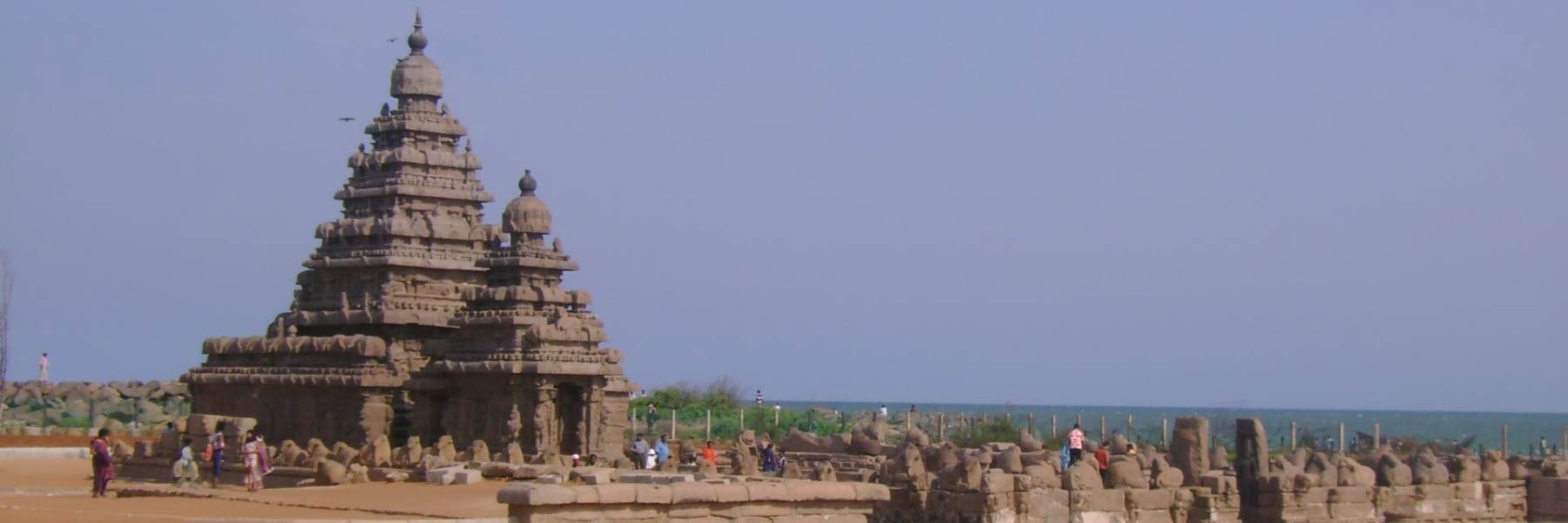
Sorry, we couldn't find anything that matches your search.
Destination

Famous Places to Explore in Hyderabad
A vibrant city with the imposing...

Raipur Tourist Places | Best Place to Visit
The stronghold of several erstwhile...

Ahmedabad
Declared as India's first UNESCO World...
#
Krishna Mandapam
The largest mandapam in Mamallapuram is dedicated to Lord Krishna. Inside this mandapam, are bas-reliefs and carvings depicting scenes of village life from Govardhan, with special emphasis on pastoral life, including a shepherd milking a cow, a farmer carrying his child on his shoulder, a shepherdess with a rolled mat on her head, a young couple pictured beautifully, etc. The largest carving narrates the story of how Lord Krishna saved the village of Govardhan from Lord Indra's wrath by carrying the entire mountain on his finger for nearly an entire week to protect the people and the cattle, while it rained so severely that everything could have drowned. The Krishna Mandapam is situated right next to Arjuna's Penance and shares the same complex with the Ganesha Ratha and the Krishna Butter Ball.

Panchapandava Mandapam
Another jewel in the Mamallapuram UNESCO World Heritage Site complex is the Panchapandava Mandapam. One of the largest cave temples in the town, it was built between the 7th and 8th centuries, under king Narasimhavarman I of the Pallava dynasty. A fine example of rock-cut style architecture, this cave temple is a rectangular structure supported by pillars. Its entrance is guarded by two seated lions and upon walking further, one can see lion bases on the columns of the verandah. Behind a few columns on the inside ramp are hidden lions and elephants, and visitors can enjoy the challenge of spotting them out. The frontage of the cave has six lion-based pillars as well, providing it an all-over royal look. There are intricate carvings on all of the walls within the cave, on the pillars, on the columns in the verandah, and the rock-cut chambers, which make for interesting detailing.

Krishna's Butter Ball
This immense boulder, about 16 ft high, is one of the prominent tourist sites in Mamallapuram. Defying gravity, the boulder is balanced precariously on a narrow base. It is symbolic of Lord Krishna's love for butter. According to legend, the boulder is a representation of the amount of butter that Lord Krishna used to steal and eat. An old wives' tale additionally tells that lots of kings under the Pallava dynasty with their army and elephants tried to move the boulder but it would not budge an inch. The boulder has a breadth that almost matches its height, and though it is rounded at some angles, it is not a perfect sphere. Today, it stands proudly as an attraction for all the visitors in Mamallapuram and leaves people confused with its logic-defying balance.

Tiger Caves
While the name brings to mind a cave filled with majestic tigers, it is actually not the case. Tiger Caves is a name bestowed upon a couple of rock-cut temples, situated in Saluvankuppam, 5 km from Mahabalipuram. The name is taken from the cave temples that have a crown of carved heads of what looks like a tiger. It is believed that the animal is actually the mythological yali and the spot is called Yali Mandapam. It makes for a great picnic spot and the large rocks and sandy shores make it a haven for birds. Since its architecture looks like an open theatre, the place also hosts several cultural events. The cave is believed to be the spot where the Pallava king used to address his people from.

Arjuna's Penance
Believed to be the world's largest structure of its kind, inscribed on two monolithic boulders, the UNESCO World Heritage Site of Arjuna's Penance (tapas) is a bas-relief, measuring to 43 ft height and 100 ft length. It has over 100 sculptures of gods, birds, beasts and saints. The relic depicts a scene from the epic Mahabharata, where Arjuna is praying hard and performing penance to Lord Shiva to ask him for his powerful and divine bow. It is said that Arjuna needed this bow in the battle of Mahabharata to defeat the Kauravas. Another legend gives the site the name of descent of the Ganges, as it is believed to be the spot where king Bhagiratha performed penance and prayed to Lord Shiva, standing on one leg, to let River Ganges descend from heaven so he could gain salvation for his ancestors.

The Panch Rathas
Currently a part of the UNESCO World Heritage Sites under the Mamallapuram Complex, the Panch Rathas (five chariots) are five spectacular rock carvings, based on the characters of the Hindu epic, Mahabharata. The rock carvings stand at the southernmost end of Mamallapuram, a fine testimony to Dravidian architecture. They were built as examples of South Indian temples but since they were never consecrated, they were not used for worship. The five ratha temples belong to the Pandava brothers- Yudishthir, Bheema, Arjun, Nakul and Sahdeva, and their wife Draupadi- the Panchaali (five-husbanded). The Panch Rathas complex was built under Narsimhavarman I of the Pallava dynasty some time between the 7th and 8th centuries. The temples are built in the shape of pagodas and look very similar to Buddhist shrines. The chariots of the Pandavas and Draupadi are accompanied by statues of an elephant, a lion and Nandi bull, vehicles of Lord Indra, Goddess Durga and Lord Shiva, respectively.







